Erich asked what kind of tea we drink. Tea is a subject dear to our hearts, so we thought we’d discuss it today.
First, some background. Over at Planet Tea they have a useful flowchart describing how different kinds of tea are made:

The critical step is fermentation, which oxidizes the leaf and turns it black. Green tea is unfermented; oolong (wu long) is partially fermented; and black tea (in Asia, “red tea”) is highly fermented. Black tea has a longer shelf life than green tea.
Growing region matters. Mainland China is by far the world’s largest producer of tea, but China is extremely polluted and we would not trust Chinese tea. Japan and Taiwan both produce excellent green teas; we drink tea from both countries.
Taiwanese Tea
The Taiwanese teas with the highest reputation are “high mountain tea”; these are grown at high altitudes above the smog. We drink both green and oolong high mountain teas from Taiwan. Ours come in 300 g vacuum-packed packages:
The one on the left is green tea, the one on the right an oolong; both are “high mountain” teas. Each package weighs 300 g. We use about 4 g (20 leaves) of tea per day, and so a package lasts about 3 months. A single 300 g package of high quality tea may cost $100, so the total cost is about $1 per day; but multiple cups of tea may be obtained from each day’s tea.
The leaves are rolled and dried during processing, and shrivel to a very small size, then re-expand when placed in warm water. Here is what they look like:
Left — rolled and dried leaves, ready to make tea. Right — an opened bud, after being used.
The opened bud on the right gives you a good idea what the leaves look like on the tea tree. Workers pluck these small buds from the trees and place them in baskets; the finest buds are plucked early in the spring.
Aside: Some Equipment
For best results it’s important to use pure water. Tap water produces a discolored tea with a foul taste. We get good results filtering our water in a Britta filter. In fact, we judge that it’s time to change the filter when our tea changes taste. The Britta instructions recommend changing the filter every two months, but we find it needs to be changed every month if our tea is to retain its flavor.
If you make tea often, it’s helpful to have a hot water dispenser, like this one from Zojirushi, along with your Britta filter:
Tea is best when the leaves have steeped for about 5 minutes. Since you may take much longer to drink the tea, it’s important to steep the tea in a separate container from your drinking mug. Here’s what we use:
Left — An Asian “busy person’s” tea-pot. A container at top holds the tea leaves and enough water to make a single cup. When the leaves are done steeping, pressing the red button drains the water into the pot, after which it can be poured into a mug. Right — an airtight container we use to store our tea leaves.
Alternatively, Asian supermarkets sell teacups in 3 parts — a mug, a container to hold the tea leaves, and a lid to cover while the tea is steeping. They look like this:
The tea leaves go in the removable upper part; when it is removed the tea drains through the holes in the bottom into the mug. After drinking a cup, the upper container with the leaves can be put back in and more hot water added to steep another cup.
Making the Tea
To make the tea, place 15-20 rolled buds into the leaf container, and add hot (near boiling) water. Taiwanese green tea typically requires 3 to 5 minutes to steep, and the tea is actually yellow, not green.
Shou-Ching likes her tea prepared the classic way. Add hot water to new leaves, and drain it after 30 seconds as the leaves just begin to open; this is thought to clean any impurities. Then add new hot water, let it steep 3 to 5 minutes, and drink this second batch. This produces a delicate, light yellow tea. Paul lets his steep a bit longer to make a slightly darker tea and adds a lemon slice. Here is what they look like:
Japanese Green Tea
Japanese green tea is made with a different process; the tea leaves are usually crumbled, not rolled. Here is what they look like:
These crumbled tea fragments are placed directly in the teacup and produce a green-colored tea. Yes, the tea leaves can be swallowed. Here is a comparison of a cup of Japanese green tea (left) with a Taiwanese green tea (right):
Obtaining Fine Teas
We are regularly sent tea by relatives and friends in Asia, so we haven’t had to shop for tea in the US.
However, Google searches turn up a number of vendors. “Tea from Taiwan” has some good-looking teas. Reader Gary Wilson kindly wrote to recommend Upton Tea Imports. And here are some Amazon links, not all currently available:
- First Grade Green Tea (Chinese Tea / Taiwanese Tea) – TenRen’s Brand (Free Gift Included – Bloosom Lotus Lucky Knot)
- Oolong Tea-Alishan High Mountain Tea,The Unique Local Climate and The Selection Criteria for Leaves Make Alishan Oolong Tea Rarity. 150g/bag Comes With Beautiful Tin Can.One of The Best Tea in Taiwan You Should Try.
- Taiwanese Tea Sampler (3 Tins) – Jasmine, TiKuanYin (Iron Goddess) & Dong Ting Oolong (Wu Long) Tea (Loose Tea)
At roughly $1 per day, fine tea is not inexpensive. However, many people spend as much or more on coffee. Paul makes 5 or 6 cups per day from a single 4 g set of leaves, so the cost averages to only $0.20 per cup.
If your only knowledge of tea is derived from the Lipton Tea Company, we very much recommend that you give fine green or oolong teas a try! You might find tea more pleasant and enjoyable than you imagined.







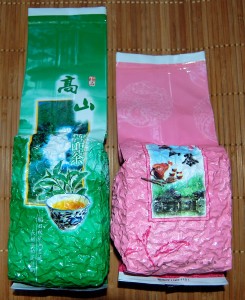
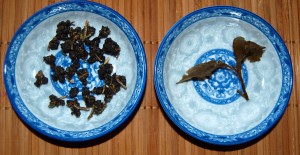
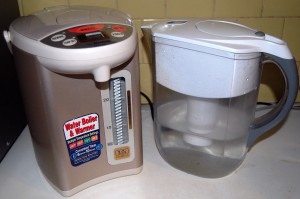
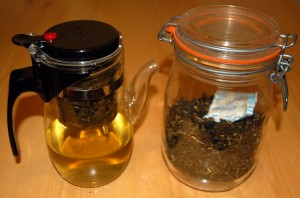

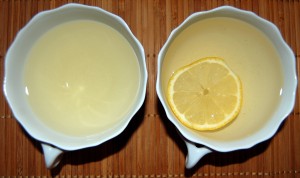

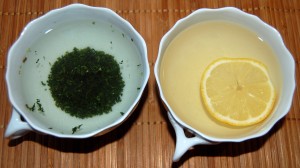




Are there any concerns about Japanese teas since the tsunami and nuclear plant malfunctionings which leaked radiation?
Hi Susan,
The main tea-growing regions in Japan are in the south: http://www.itoen.co.jp/eng/allabout_greentea/regions/index.html.
Fukushima is in the northeast and the wind blows from the west mostly, so the radioactive material gets deposited mainly in the ocean and the northeast part of Japan. I would guess tea from the minor tea-growing prefectures of Ibaraki and Saitama might be affected, the others probably not much. But it’s a good question.
Best, Paul
Hi Paul,
What´s yor take on “yerba mate”? Here in Argentina and around the region -Uruguay, Paraguay- this beverage is staple . Many people drink up to 2 or 3 liters along the day. I Know that in USA the mate has become increasingly consumed recently. I´ve read that mate leaves have similar compounds as to green tea leaves.
Hi Paul,
Thank you for your and Shou-Ching’s very informative blog. When you described brewing tea, you mentioned using water from a Brita filter. Where I live, our water is fluoridated. I know that fluoride is one of the toxins that take up residence in the thyroid. I don’t believe that the Brita filter takes fluoride out of water. Do you have a discussion on your blog about water filtration/purification? Would you consider bringing an “expert” to your blog on this topic? Hydration is a large part of a “perfect diet”, but it would be good to know how to obtain non-toxic water. I understand that reverse osmosis only takes out a certain percentage of fluoride and I don’t like the expense or the quality of most bottled waters.
Hi April,
There is no discussion on our blog of water filtration or purification, because we are not expert in it. I would consider a guest post by an expert, but I don’t know any such expert.
Paul,
what do you think about (naturally occuring) fluoride in tea?
i drink 2 – 4 cups/day. (black, green, oolong, occasionally herbal infusion).
do you think the concern is real or alarmist? (i’m not too concerned but would like to hear your opinion, cause you’re level headed & a physicist)
have a great summer,
I’m not concerned about it myself. Flouridated water would be a bigger concern, but even that is not worth losing too much sleep over.
Hi, Paul,
we usually don’t drink flouridated water.
also i heard that the fluoride in tap water is different from the one in tea.
Chris Kresser has an article on the “dark side of tea.” that is why i asked.
(can’t find the URL anymore)
i just wonder that a substance naturally present in food may be quite different from getting an isolated compound. the latter is reductionists. i.e., fruits (within reason) vs. fructose.
enjoy your summer,
pam
ps. you two look good in the new photo
Paul — I didn’t see an answer to the post above about Yerba Mate. I enjoy this type of tea, but wondered what your thoughts were on it. The kind I buy is air dried (supposedly lower caffeine content that way) and “made from the rain forests of Brazil”. Thoughts?
Hi Sharon,
I’m not very familiar with Yerba Mate so I don’t have many thoughts. Perhaps other readers do. I’m going to start a forum soon which will be a good place for questions like that.
Hi, I’ve been trying to eat ‘Paleo’ for the last few months in order to improve my health generally. Then since purchasing your PHD book a couple of weeks ago am now starting to follow its principles. I have to confess the thought of introducing starches is scary, but I’m giving them a go. I just wanted to mention that I cut out coffee and black tea (with milk), and replaced them with green teas. Three months later my INR reading at my anticoagulation check up was extremely low and increased warfarin doses didn’t help (I’m on warfarin for life as I have a mechanical aortic heart valve). Cutting a long story short, it turned out the green tea was the culprit. After I stopped drinking the tea, my INR headed back to a safe level. Something to do with Vitamin K I believe. (Sorry, I’m not that into the science stuff you can tell! 😐 ) By the way, the PHD is going really well – I feel great and have lost a couple of pounds already. I’m hoping it will help bring down my high blood pressure a bit – I’ll let you know!
Hi Teresa,
Thanks for letting me know. Interesting about the green tea — I wouldn’t have expected that.
Glad to hear PHD is going well for you! Please do let me know what happens with the blood pressure.
Hi Paul,
As a long time tea drinker, I recently came across this…what do you think?
http://www.precisionnutrition.com/rr-green-tea-hazards
Hi Janis,
I think if you’re drinking tea in moderation it’s no problem at all. If you’re supplementing green tea extract it will be much easier to overdose.
With the 20 Leaves, how much water do I pour? A cup? and if I drink through out the day do I have to use the same leaves or new ones every time?
Thank you!
What is your opinion on eating green tea leafs? I really don’t care for the taste of green tea so I just add the dry leafs to my morning smoothy so I can still get the health benefits. Is there any danger in doing that?
I always search for information about green tea, and I like your post a lot due to the fact you give a wide range of news and make a comparison with the Taiwanese green tea, how does this taste? In what it differs from the japanese one?
thanks in advance
I realize this is late, but I just visited a tea plantation outside of Charleston SC (appropriately called Charleston Tea Plantation) that is the only US location to grow tea – in case it is of interest to anyone.
I have tried to replace coffe with a green tea but no success 🙁 Will try do it again, thanks for article 🙂
hi, britta contains silver, which leaks into the water and is a strong antibiotic. no worries? what about aluminium in tea? no worries either?
Thanks for the info about brewing tea. Green tea is my new favourite. I just found the Alpine Tea Company in Australia. Delicious Japanese-style green tea grown in a very clean environment. http://www.alpineteaco.com.au/
What is the significance of pesticides that may be used on the above mentioned teas? Is it worthwhile seeking out Organic high mountain taiwanese teas? Thank You Paul
Wow—That’s a lot of money for tea. I never spend that much on coffee. Well, I don’t drink coffee. There are isles and isles of tea in my local health food store as we’ve all seen. What about all those?
Hi,
I was wondering if tooth paste with fluoride is safe? And what about Deodorants with Aluminium? I’ve heard lately that aluminum can promote breast cancer? I’m curious about your opinion about personal care products…
Jasmin
Hello Paul and everyone. I know this is an old post but I would like to ask Paul, whom I trust, if I need to be drinking only organic tea. I like Taiwanese Oolong and Japanese Green tea but I alwaysw buy quality organic and its very taxing on my wallet.